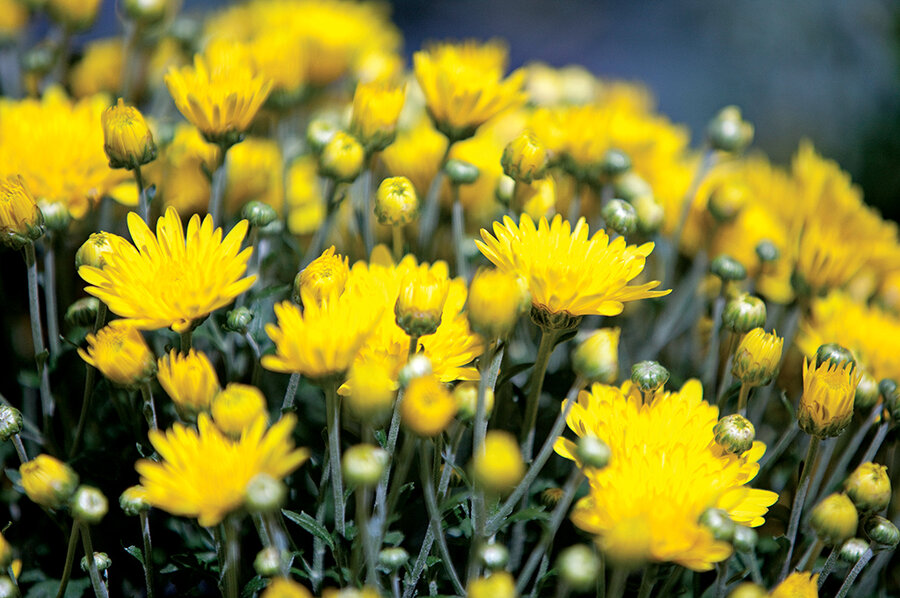How to grow chrysanthemums
Loading...
I’ve never been much of a chrysanthemum fan. For one thing, they smell funny to me. Many of the colors are gaudy. And the blooms don’t age gracefully.
But starting soon I’ll see hundreds of mums lined up in front of roadside stands and garden centers. I know what the mum and pumpkin sightings mean: I am being pushed into fall when I’m not ready to let go of summer.
I know I’m out of step. Mums have been popular for thousands of years. They bloom for many weeks and add splashes of color in gardens that are winding down for winter.
So despite the fact that I am a chrysanthemum curmudgeon, here are tips to help you grow them successfully.
Chrysanthemums were grown in China as flowering herbs as far back as the 15th century BC. The plant was considered a symbol of nobleness, and flowers were often depicted on fine pottery. Mums were introduced to Japan in the 8th century. Both countries developed extensive hybridizing programs that, over the centuries, produced the domesticated garden mum.
Mums found their way to Europe in 1789 when a Chinese variety called Old Purple was most likely the first cultivar grown in the Western world.
Today, hybridizing continues at full speed in hopes of creating new flower forms and plants that can better tolerate cold. Hundreds of cultivars are available in an amazing array of sizes, flower shapes, and colors.
The care of mums depends on which variety you choose and how long you plan to keep them alive.
The showy “florist” mums are wonderful as cut flowers and for indoor decorating. They don’t have extensive root systems, though, so they almost certainly will not overwinter if planted outside. Leaves may even turn black if temperatures fall below 60 degrees F., so if pots are on the deck during the day, bring them in at night. When blooming ends, give them the heave-ho.
Almost all garden mums are excellent in containers if you follow a few simple rules. First, the plants you buy will probably be rootbound. Repot them in a bigger container in good soil.
Second, mums love sun, so choose a location that has at least four hours of direct sunlight. Most important: Mums are notorious for drying out quickly. Keep the soil moist, but not soaking wet. Snip off spent blooms to encourage more flowering.
If you just want to add a few mums to the garden for fall display and treat them as annuals, your to-do list is short: Choose a sunny location that offers good drainage. These mums shouldn’t need as much watering as container pots do, but be ready to give them a drink if leaves droop.
“Hardy” garden mums are tender perennials in USDA Zones 5 to 9. Spring planting gives them the best chance to establish roots before cold weather, but they can survive fall planting.
•Choose a location that receives at least half a day of sun. Place plants about 12 inches apart in fertile, well-drained soil.
•Water thoroughly. Keep soil moist as cold weather nears.
•Never fertilize mums in the fall.
•Don’t prune them, either. Snip off dead blooms, but leave the branches through the winter. Mulch plants with four inches of shredded leaves or hardwood after the first freeze.
•In the spring, cut off old stems and gradually remove mulch. Pinch mums back from June through July 15 to encourage bushy growth and a greater show of fall flowers.
•Many experts recommend choosing no more than two colors for mass plantings.





